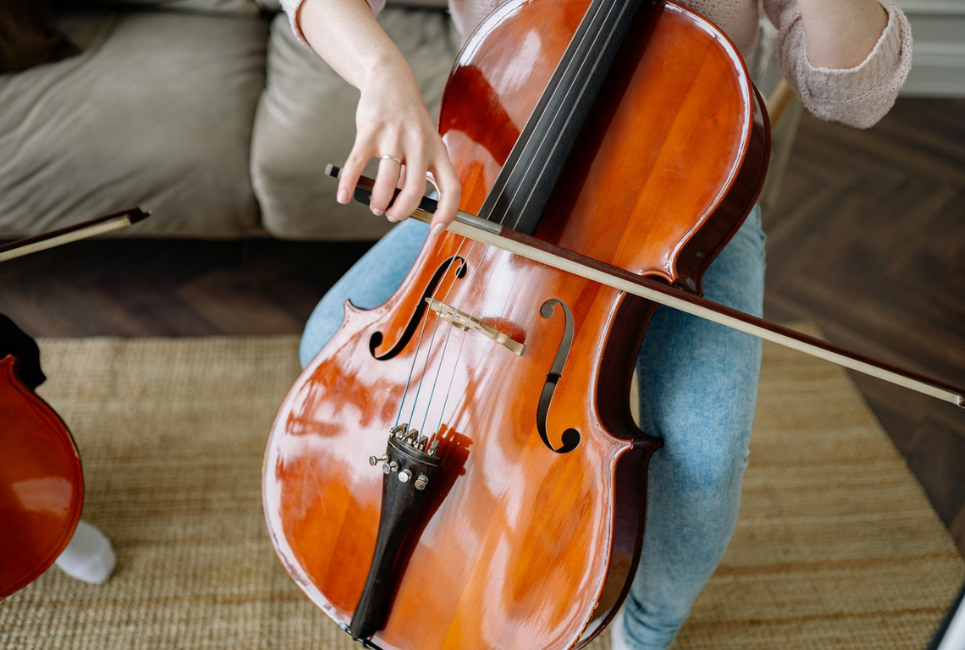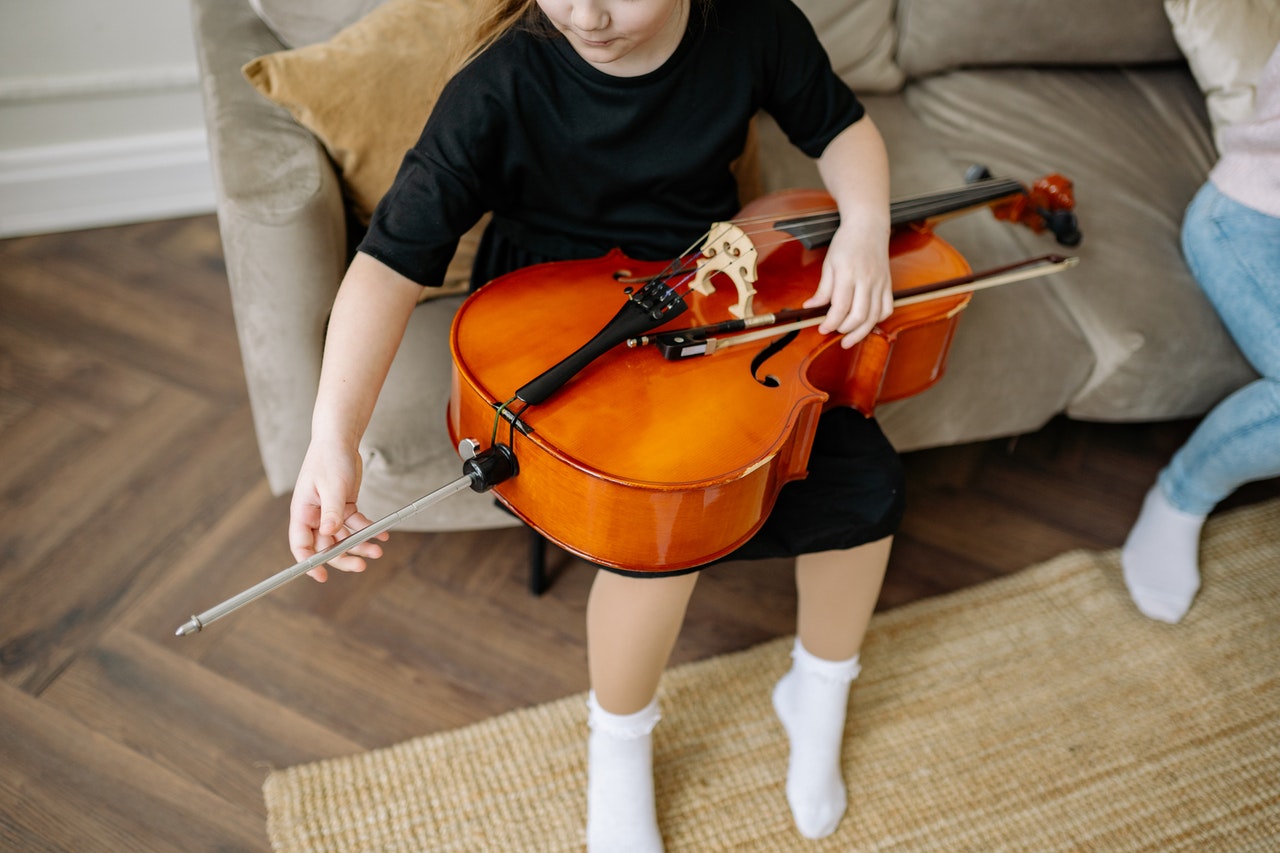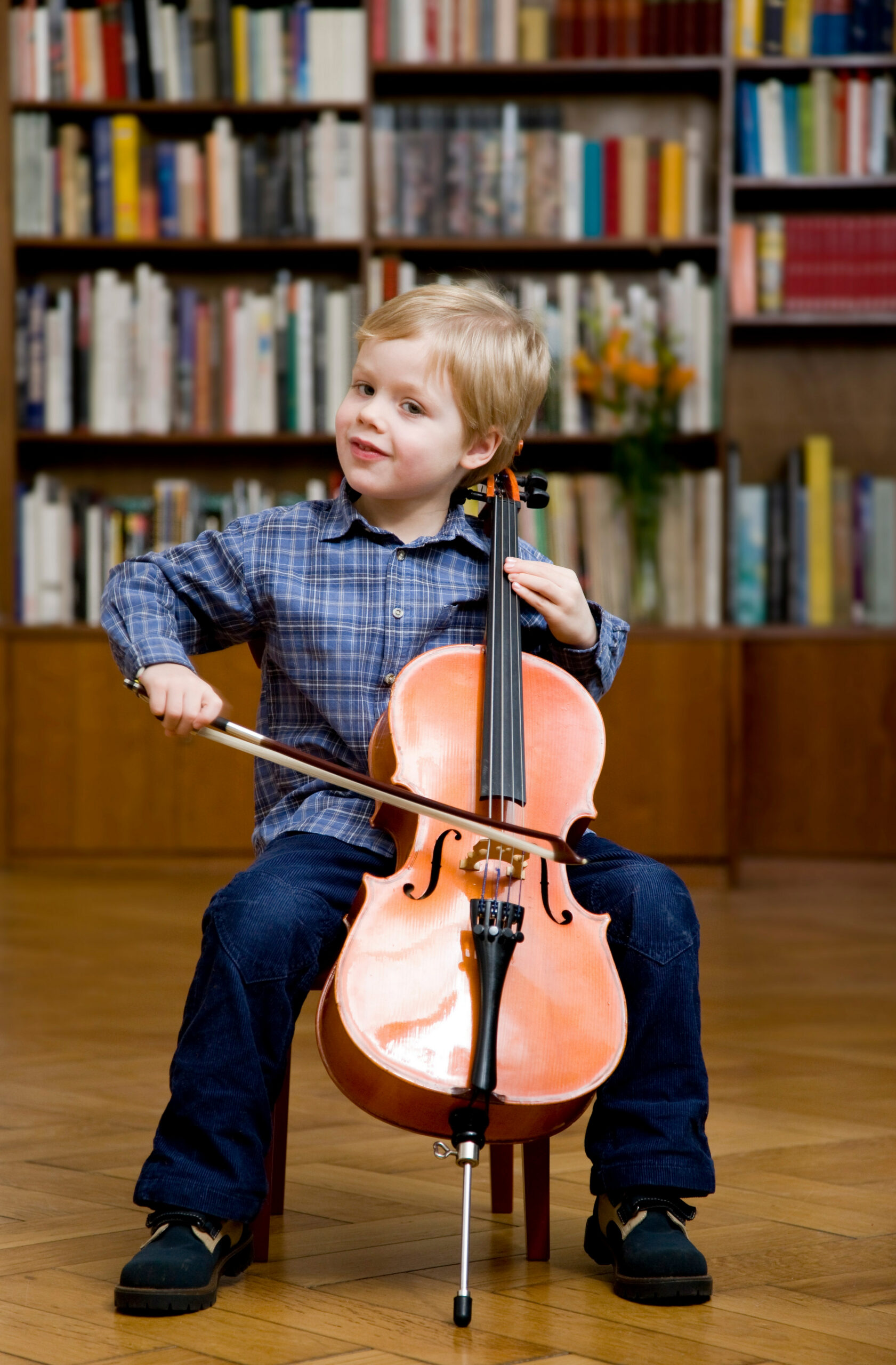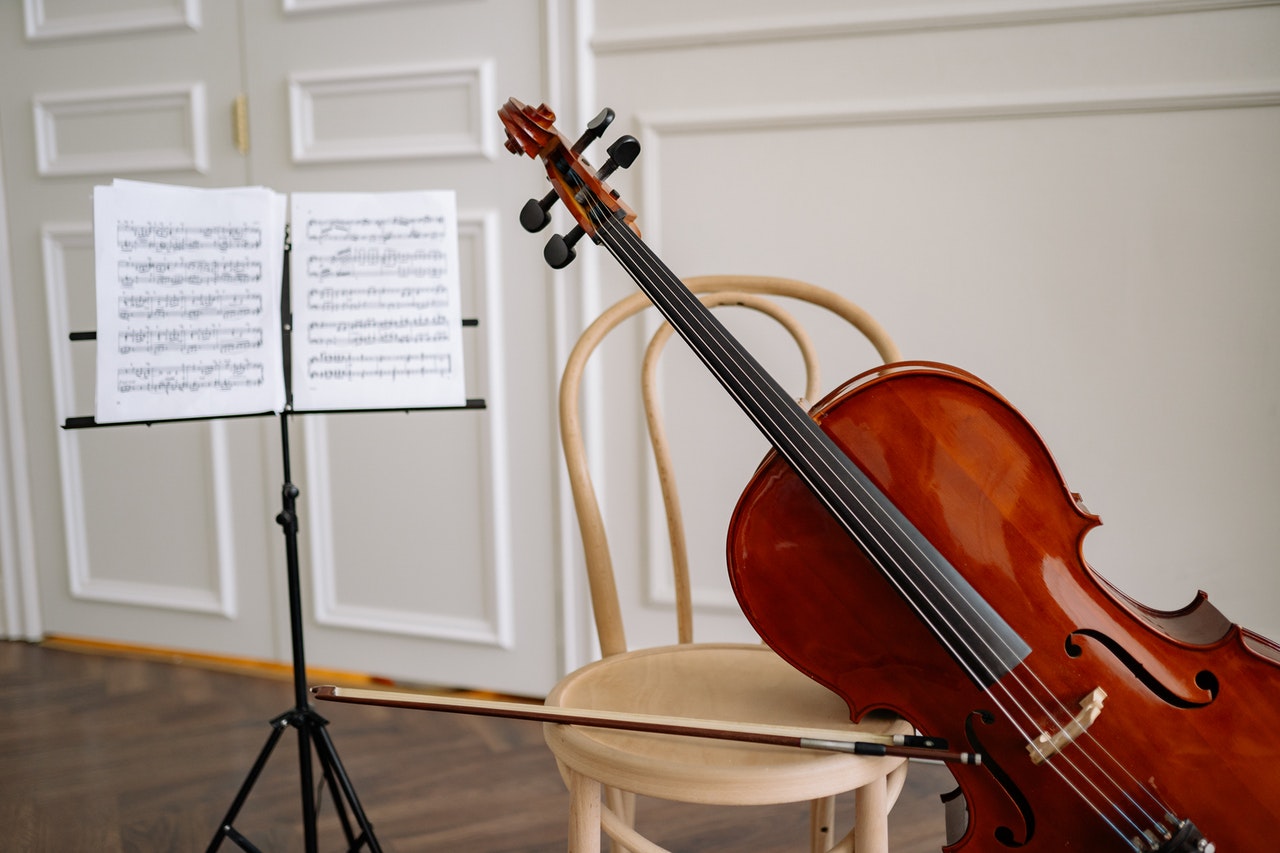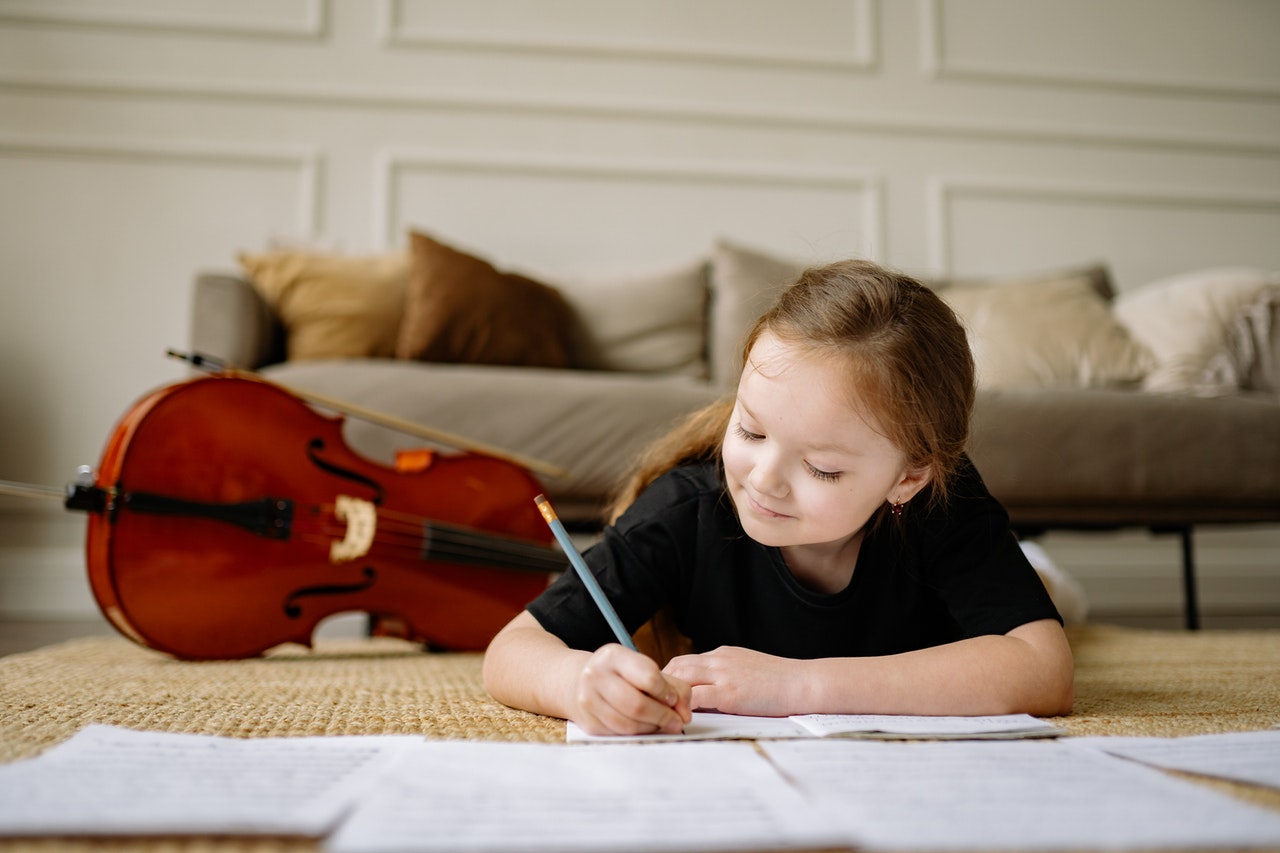- Best 1/8 Cello Guide - January 6, 2022
- Best Cello Tailpieces Guide - January 4, 2022
- Best 3/4 Cello Guide - January 4, 2022
If you’re reading this article, you are looking for a cello for your young child to begin playing on. Congratulations on deciding to start music lessons from a young age! Your child will learn lots not only about music but about themselves and the world around them from lessons. Playing an instrument teaches a child problem-solving skills and critical thinking that stay with them for the rest of their lives and carry over into other non-music areas.
A 1/8 size cello is going to be an appropriate size for children who are four to seven years old or pre-school to first grade. However, this will not be their only cello. As they grow, they will need to get larger instruments until they are able to play a full-sized or 7/8 sized cello. Very likely, your child’s 1/8 sized cello is going to be their first instrument. But keep in mind, it most certainly will not be their last.
First Steps
There are a few things you should consider before purchasing your child’s first cello.
Their first cello, but not their last
First, as said before, you should remember that this cello is not going to be your child’s last instrument. As they grow, they will need to get larger-sized instruments that fit their body. Everyone has unique body measurements and growth periods, so it’s hard to put a timeframe on when your child will need a larger size. However, just knowing that they will need a larger size is enough to consider that it’s not wise to plunge into looking for the “best 1/8 sized cello” right now – you will need to get another instrument later, and it will most certainly cost more in price, as the top quality available for instruments increases with their size.
If you spend your music budget all on your child’s first cello, then you will have none left to get their next size up when the time comes, and not having the right sized cello will hinder their ability to make progress. Additionally, spending the entire budget on the instrument alone could be problematic when the time comes to purchase other things they will need, like sheet music and strings.
Price
On the subject of price, you should consider that children who would fit the 1/8 sized cello – approximately five to seven years old – are five to seven-year-old children. They make mistakes, they drop things, and sometimes are clumsy. Maybe they will forget their instrument somewhere, or they may accidentally drop it.
It is critical to teach them how to respect their instruments and equipment from a young age, but this is a mindset that they will need to develop, and the odds are that they will make some mistakes. You do not want to have an accident occur and have it be a great financial loss.
Renting or buying?
It is possible to rent an instrument. This may be more advantageous, as it will give your child a wide selection of instruments to choose from for a price that is affordable. However, your child is just starting their life in music, and they will not be considering things about tone quality and sound of the instrument. Having a perfect-sounding instrument is not going to help your child develop the right posture and technique they need at this stage.
A 1/8 sized cello is not going to sound like a full-sized instrument. Additionally, you should consider that many players like to keep their first instrument for sentimental reasons. If you are renting an instrument, it does not belong to you, so you will have to turn it back in at the end of the rental period per the agreement you have with your music store.
Why “quality” isn’t important
The most important thing your child needs in the cello is for it to be the right size. Some 1/8 sized cellos will be nicer quality than others, but if your child has never touched a cello before, this shouldn’t be your first consideration. Some salespeople may try to sell you on the quality of an instrument, saying that a bad instrument will make your child sound bad no matter how good they play. To some extent, this may be true; however, your child will not start outperforming on the concert stage. They need to learn how to hold the bow, how to draw the bow, and proper left-hand technique and posture.
But how will they sound good?
You may think that they will need to start on scales, but there is an even more basic level below that of learning the proper playing posture. It is vital to establish good posture and position at this age because bad posture and playing position may lead to injuries later, or at the very least, your child will not be able to play to their full potential.
Do not get sold on the “best sounding 1/8 size cello.” There is no such thing, no matter what anyone on the internet says. You will waste a lot of time and effort looking for something that will not benefit your child. The most important thing you should be looking for in a cello is the size.
Sizes
Saying a cello is 1/8 size does not give an exact measurement down to the millimeter. Rather, it is just a general range of instruments. You may find a 1/8 sized instrument with a back length anywhere from 17 to 20 inches. Therefore, the best 1/8 sized cello is the one that fits your child. The tone and the quality of the instrument truly do not matter at this point as much as the size.
How should you know which cello to get then? It is vitally important that you and your child go to your local string shop with qualified salespeople. If you go to a general music store that sells all kinds of instruments like guitars and drums, or a pawn shop, then you won’t have as much of a selection, and the probability of finding someone qualified to help you decreases.
Where to look
If you live in or near a large city, look online for your local reputable string shop. Ideally, your child’s teacher will be able to provide advice on where to go. If you do not have a teacher for your child already, it is advised that you stop looking for a cello and instead start looking for a teacher. You may think that your child will be able to learn from watching videos online. However, you don’t know what you miss until it is too late.
Having a teacher prevents your child from developing bad playing habits, and it ensures that your child will make progress solidly and faster than by themselves. Especially at this young age, it is important that your child get a good foundation in playing, and this simply is not possible without meeting regularly with a teacher.
On the subject of a teacher…
Maybe you are not looking to sign up because you’re not sure if your child will stick with it. Even if your child is not sure whether or not they will want to play the cello, still find a teacher first. If you are just looking to try it out, tell your teacher this before signing up, and then there is no worry about having to drop out of lessons later if your child does not enjoy it.
If your teacher says that they won’t be able to do less than signing up for a semester or year of lessons at a time, and if you drop, there is a penalty, find a different teacher. No teacher will probably let your child decide every week if they want to have next week’s lesson because the weekly time slot in the teacher’s schedule prevents other students from taking that time regularly. However, they may let you pay for lessons 4 or 5 at a time, just to make sure it’s a good fit.
The store
Once you’re in your local string store, you will find lots of help from the salespeople. They will have your child sit down on a chair where their feet can touch the floor, and they can sit up straight and hand them a cello to try. With the endpin extended to about a foot, the top of the cello should touch your child’s chest, the lower part of the cello should touch their knee, and the tuning peg for the lowest string should be near their left ear. Then, they should try to move their left hand around the fingerboard to make sure they can reach all of the top parts and most of the lower parts. It is appropriate to ask your teacher to come to help you if you want to make sure you get a good fit. Plus, having your child’s teacher with you will ensure that you are getting good advice and not getting ripped off.
If you do not live near a music store, then your teacher may have some other people in the community that is selling cellos are in your size.
Buying online?
It is never a good idea to buy an instrument online. First, you do not know what size it is. As previously said, “1/8 size cello” is just an average range. You will not know how it fits your child, and there is no way to tell until it is too late. You can take your chances measuring your child from methods online, but it is a gamble that you, or more accurately your child, can lose.
Additionally, the quality of the instrument may not be suitable. There is not a lot of quality variation in a 1/8 size cello, but you want to make sure that the instrument is not a complete mess, which is something you can only tell by looking at it.
It is not a good idea to buy your fine-stringed instruments online, ever. If you live far from a music store, it is still well worth the trip to go, especially for your child’s first instrument. If their instrument does not fit them and it is not comfortable to play, then they will get frustrated, dislike playing, and quit, or they will develop an improper technique that can cause bad injuries later in life.
Some musicians who developed bad habits early on, but kept playing, found that they had to quit playing later because of injuries that developed from an improper technique that was never corrected. For all of these reasons, it is not good to buy an instrument online.
The Recommendation
It’s not advised to buy an instrument online, period. There’s no way you will tell if it will fit your child before it’s too late to return it. If buying online is an absolute must, as in, you live in a remote village in the hills of Appalachia, then consider renting online instead. Renting from a reputable music company will provide you with an option for returning the instrument if it doesn’t work out.
The “brand” and quality of your 1/8 size cello do not matter for the reasons stated above. Therefore, you shouldn’t go hunting for something that doesn’t exist. Instead, consider renting from a company that is stringed-instrument education-specific, one that is reputable, and one that has been in the business of renting instruments for a long time. They will be able to provide you with the support you need when situations arise, including looking for another instrument when the time comes.
SHAR Music is a company based in Ann Arbor, Michigan that caters to classical stringed instrument players of all abilities. The salespeople are qualified to make accurate recommendations and help you on your musical journey.
Currently, SHAR offers four packages of 1/8 sized cellos available for rental. The price varies between the packages to include additional accessories, like a rockstop and a music stand. (More on that in the FAQ.)
The writer’s first recommendation is always to go into a store to see the cello in person. Regardless of the quality of the instrument, you won’t know if it’s the right size, which is the most important part. However, in situations where you are not able to access a stringed instrument store, renting from SHAR seems like a good first step. Their website is sharmusic.com.
Some FAQs
Answer: Professional violins, violas, and cellos do not come in brands. They are made by individual makers in individual shops. A brand of an instrument implies that you can buy multiple of the same instrument, whereas quality instruments are thought of as unique items that do not exist in duplicate. Student sizes of these instruments may come in brands.
However, the brand of your 1/8 sized cello does not matter. To reiterate, the most important consideration at this point is the size of the instrument. The best brand of 1/8 size cello is the one that makes an instrument that fits your child. Do not get carried away looking online for the “best brand.” Many people try to convince beginning parents that their child’s first instrument must be professional quality and that their brand is the “best.”
Your child is going to need a larger-sized instrument if they want to continue playing in the future anyway. Your child is not going to start performing as a concert artist their first week on their 1/8 sized cello. They are going to start with posture and technique. You can blow lots of money on the “best brand of 1/8 sized cello,” but it will ultimately be a disappointing experience.
Focus instead on finding an instrument that fits your child. If you have an instrument that fits your child perfectly, then you have the “best 1/8 size cello.”
Answer: It is important to have a bow, rosin, and a case first of all. Maybe when you buy your cello from a music store, it will come with these things. It goes without saying, but your child should also have a chair in your house that is short enough that they can put their feet on the floor and sit up straight – if you do not have one of these, then purchase one at a department store.
If the floors in your house are not carpeted, you will also need a rockstop. The endpin of the cello is supposed to help hold the instrument. If the point is pressing into the carpet, it won’t slide, but if it’s pressing into linoleum, for example, it might. It’s not advised that you stick it into a wood floor, as it will leave marks. Therefore, when playing on a hard floor surface, a rockstop goes under the leg of the chair and extends out to the right length to give the endpin something to anchor into.
Soon after starting, your child will need a music stand short enough for them to read off of. At some point, your child may need to change their strings, but do not worry about this yet; it is a long way off. Follow your teacher’s guidance when they need to change their strings. Your teacher will also, at some point, recommend some method books or sheet music for your child.
Your child may also find it advantageous to get a tuner and a metronome, but these are not crucial at this point. It is worth mentioning: while some people have free apps on their phones for these things, every time your child needs a metronome or a tuner, they will need your phone.
If you’re not around or if you’re using your phone, they won’t have the tools they need. It is not necessary to buy these things now – they will be useless for your beginning cello student. But when they begin to learn to tune their own instrument and develop a sense of rhythm, it is wise to purchase these things instead of relying on the phone.
You can find lots of accessories online available for purchase that people say are “necessities” for your beginning student. All your child needs right now is a cello, a bow, rosin, a rockstop, and a case, in addition to the chair. That’s it! Don’t waste a lot of money on miscellaneous things until your teacher advises you to get them.
Answer: Your teacher will instruct your child first on good posture, and how to sit. Your child shouldn’t be slouching over in the chair, and should be sitting up straight, feet flat on the floor. The next thing to consider is keeping the bow straight and parallel to the bridge. The bow should never be at any angle that’s not parallel to the bridge.
Drawing a straight bow can be a challenge at first. Try to have your child aim the tip of the bow at something in the room, and follow its path. Then, do the same for the screw of the frog. It takes a lot of practice, but with effort, it’s not impossible!
Hopefully, your child will enjoy a long life of making music. Many successful professionals in a variety of fields had musical training from a young age, crediting the life lessons learned as a music student as part of what helped them be successful. Above everything else, your child should always be excited to play their instrument and make music, and as their parent, you should do everything possible for them to maintain that enthusiasm.
Never discourage your child; never tell them they don’t sound good. Always find an excuse to give positive, encouraging feedback. It can be a frustrating experience to learn to play an instrument, but with proper support from their parents, it can be a very rewarding experience for you both.
Looking for more interesting readings? Check out:

